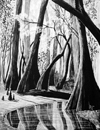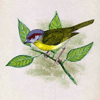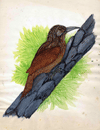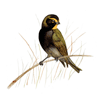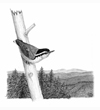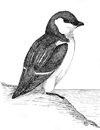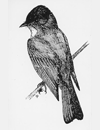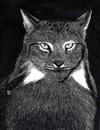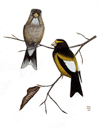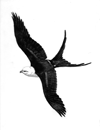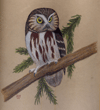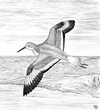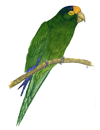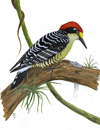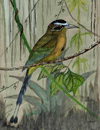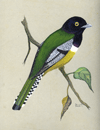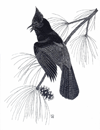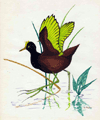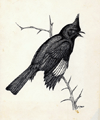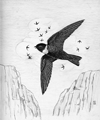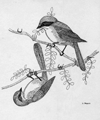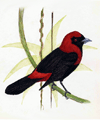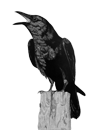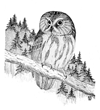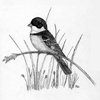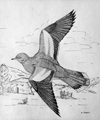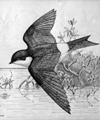
Copyright 2009-2024. All Rights Reserved.
Mexico Trip

Because of the academic rigors of Davidson College, I had little time for artwork. During the summer of 1966, following my graduation, I went on a field trip with the Davidson biology department led by my mentor, Dr. Tom Daggy. Later, Mark Simpson and I, who were both teaching high school biology in Charlotte, were asked to give a talk to the Mecklenburg Audubon Society about our trip. We had not been equipped for bird photography, and had no pictures of any of the birds we had seen. So I offered to do a series of paintings and drawings to illustrate the talk. That was the impetus for me to return to wildlife art in a serious way. It was a period of experimentation with media and learning about bird anatomy, and I had access to much better materials, but the results were not significantly better, in my opinion, than those I had done before college.
In the summer of 1968, my birding buddy Mark Simpson and I took a trip to the American southwest. On the return leg, we visited with Dr. George Miksch Sutton in Oklahoma. Sutton had been an idol of mine from my earliest interest in birds. Coincidentally, the night we arrived he was giving a lecture about bird painting and showing some of his justly famous field studies. Up until then, I had never seen anyone else’s original bird paintings, only published versions. Seeing Sutton’s originals was an epiphany. I remember saying to myself, "now I see how to do that", as I studied his use of layered washes in a detailed watercolor. The next day, Dr Sutton was kind enough to critique some of my own works, which were at that point rather embarrassing. When I got home to North Carolina, I painted a series, only three of which (American Woodcock, two vulture heads) I still have, of suttonesque works that were so much better than anything I had done before that you would have thought them done by a different person, and in a way, they were. Although painted from published photographs and without access to specimens, they still hold up today and show that artistic progress does not necessarily occur gradually. My own career is clearly an example of “punctuated equilibrium”, to steal Stephen Jay Gould’s evolutionary term, in which I go for years experimenting with media and techniques, but not improving much, and then almost overnight make a major leap forward.
In the summer of 1968, my birding buddy Mark Simpson and I took a trip to the American southwest. On the return leg, we visited with Dr. George Miksch Sutton in Oklahoma. Sutton had been an idol of mine from my earliest interest in birds. Coincidentally, the night we arrived he was giving a lecture about bird painting and showing some of his justly famous field studies. Up until then, I had never seen anyone else’s original bird paintings, only published versions. Seeing Sutton’s originals was an epiphany. I remember saying to myself, "now I see how to do that", as I studied his use of layered washes in a detailed watercolor. The next day, Dr Sutton was kind enough to critique some of my own works, which were at that point rather embarrassing. When I got home to North Carolina, I painted a series, only three of which (American Woodcock, two vulture heads) I still have, of suttonesque works that were so much better than anything I had done before that you would have thought them done by a different person, and in a way, they were. Although painted from published photographs and without access to specimens, they still hold up today and show that artistic progress does not necessarily occur gradually. My own career is clearly an example of “punctuated equilibrium”, to steal Stephen Jay Gould’s evolutionary term, in which I go for years experimenting with media and techniques, but not improving much, and then almost overnight make a major leap forward.
